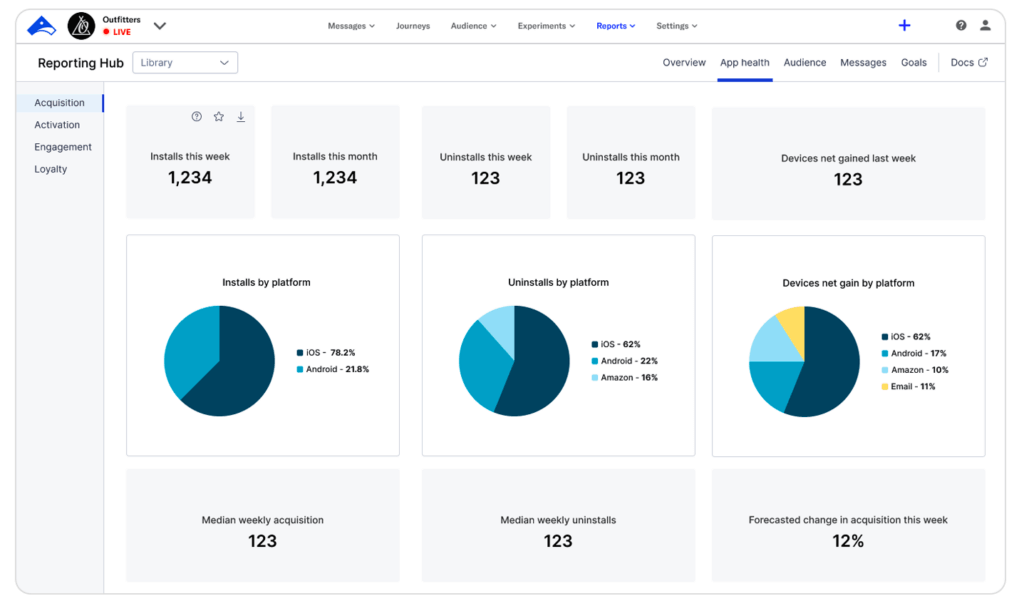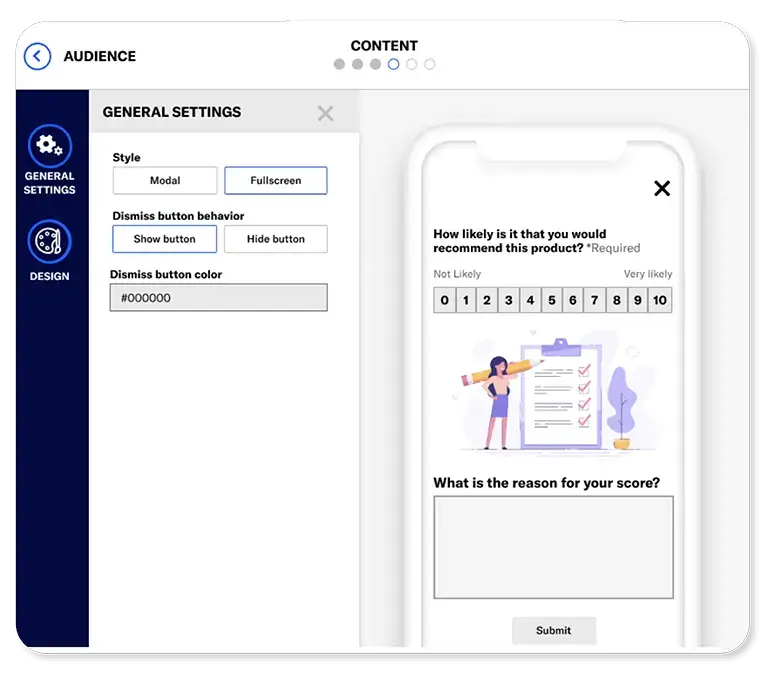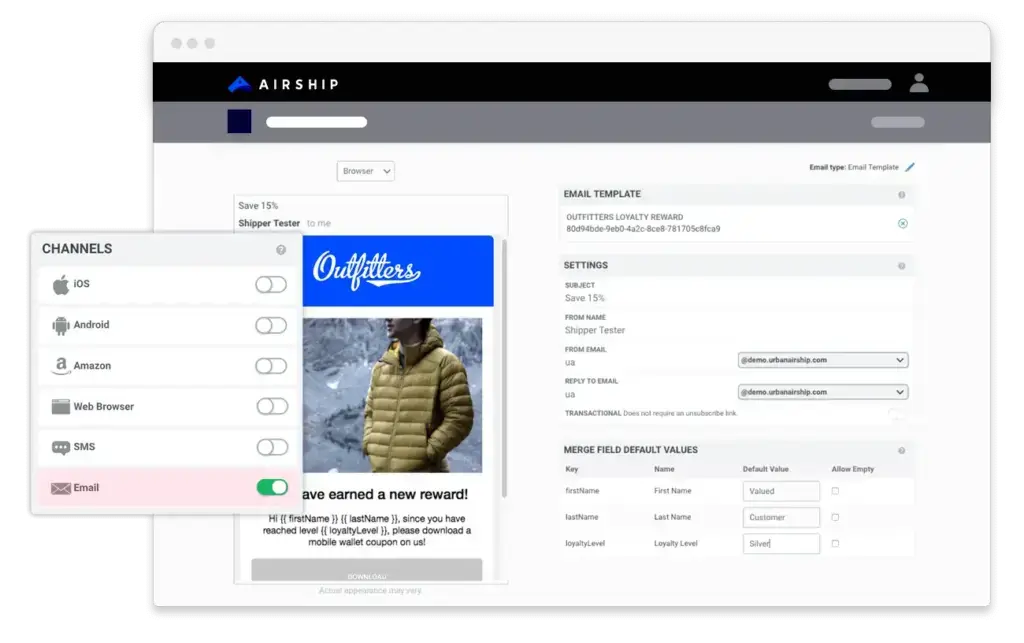What is Customer Experience Automation?
Customer experience automation, or CX automation, uses technology to automate different aspects of customer interactions and processes. This automated customer experience approach aims to improve customer satisfaction, increase efficiency and provide personalized customer experiences.
CX Automation vs. Customer Relationship Management
While CX automation and customer relationship management (CRM) focus on improving customer interaction, they differ in approach and scope. CRM systems primarily manage customer data and interactions, while CX automation automates and optimizes various touchpoints throughout the customer journey.
CX Automation vs. Marketing Automation
Marketing automation usually focuses on lead generation and nurturing, but CX automation looks at the entire customer lifecycle. While marketing automation is an essential part of customer experience, CX automation extends beyond marketing to include sales, support and post-purchase interactions.
The Four Pillars of Customer Experience Automation
Here are the four key components to help you fully understand what customer experience automation is. These pillars lay the foundation of any successful CX automation strategy.
Crafting Seamless Customer Journeys
Orchestration — mapping out and optimizing the entire customer journey — is a big part of CX automation. By identifying important touchpoints and automating interactions, companies can create a seamless experience across all channels.
Tailoring Experiences Through Smart Segmentation
Effective segmentation allows businesses to group customers together based on certain criteria, such as behavior, preferences and demographics. Segmentation allows for more targeted and relevant automated interactions.
Delivering Personalized Experiences
Personalization is at the center of CX automation. By using customer data and AI-driven insights, companies can create customized experiences that resonate with individual consumers.
Streamlining Processes With Automation
Companies can use technology to automate repetitive tasks and free up human resources for more complex activities. This includes automating responses, workflows and decision-making processes.
Benefits of Customer Experience Automation
Implementing an automated customer experience strategy can transform how companies interact with customers and manage their operations. This transformation can lead to many benefits for companies across all industries. Here is a look at some of these advantages.
Lowering Operational Costs
By automating routine tasks, businesses can reduce support team workloads. Automated customer experience systems can handle a large volume of repetitive tasks, freeing up human agents to focus on higher priority items. This efficiency reduces staffing costs and minimizes the need for more expensive training programs.
Boosting Customer Satisfaction
Automated systems provide quick, accurate responses to customer questions. Customers who receive answers quickly are more satisfied and have a better overall experience. Customer experience automation also ensures consistent and accurate responses, eliminating human error and reducing frustration.
Creating Personalized Customer Messages
CX automation lets businesses send targeted, personalized messages based on customer behavior, preferences and history. These tailored messages increase engagement and conversion rates. Automated systems can use data from various touchpoints to create highly relevant messages that resonate with customers and foster stronger relationships.
Ensuring Consistent Customer Experiences
Automation helps maintain consistency across all customer touchpoints, regardless of the channel or time of interaction. An automated customer experience strategy ensures every customer receives the same high-quality service, whether they’re interacting with a chatbot, email system or human agent. This consistency builds trust and reinforces brand loyalty.
Gain Valuable Insights
Automated systems can collect and analyze significant amounts of customer data. With this data, companies gain valuable insights into customer behaviors and trends. CX automation systems often include advanced analytics tools that can find patterns, predict customer needs and highlight areas for improvement. These insights can help businesses with business strategies, product development and marketing plans.

Strengthen Customer Loyalty
By providing personalized and relevant experiences, CX automation can help build stronger, long-lasting relationships with customers. The ability to anticipate customer needs, offer proactive support and provide tailored recommendations can improve customer loyalty.
Increased Profitability
Better customer experiences often lead to higher retention rates, increased upselling opportunities and improved profitability. An effective CX automation strategy can streamline sales processes, determine cross-selling opportunities and reduce the cost of customer acquisition. By improving efficiency and customer satisfaction, businesses can see a positive impact on their bottom line.
Higher Net Promoter Scores
CX automation can help improve Net Promoter Scores (NPS) by consistently providing positive experiences that turn customers into brand advocates. Quickly resolving issues, providing personalized interactions and actively supporting customers can increase the chances of customers recommending a company’s products to others.

Ways to Use Automation for CX
Implementing CX automation is not a one-size-fits-all approach. It’s a versatile strategy that companies can tailor to fit their unique needs and goals. Here are some ways companies can implement an automated customer experience strategy.
AI Assistants
AI-powered chatbots can handle a range of customer questions and provide instant responses. By doing this, they can free up human resources for more challenging issues.
Effortless Appointment Booking
Automated scheduling systems allow customers to book appointments or services at their convenience without needing human intervention.
Smart Email Campaigns
Automated email workflows can nurture leads, provide personalized recommendations and inform customers about their orders or account status.
Gathering Customer Insights
Automated surveys can collect valuable feedback at different stages of the customer journey. This information can help companies identify areas for improvement.
Examples of Customer Experience Automation
CX automation can include several strategies and tools that improve customer interactions, streamline processes and boost overall satisfaction. Here are some examples of how companies can use automation to optimize the customer experience.
Automated Responses
Automated email responses or chatbots can address common customer questions and reduce response times. Companies can program these systems to recognize keywords and provide instant, accurate answers to common questions. They can efficiently send customers to the appropriate human agent for more complex requests.
Listening and Feedback
Automated analysis tools can track social media and review sites. These systems use natural language processing to analyze customer comments, categorizing them as positive, negative or neutral. This real-time insight enables companies to quickly address negative feedback and identify trends in customer opinions.
Tailored Customer Experiences
Using customer data to create personalized product recommendations, content and offers can improve the overall customer experience and drive sales. Advanced algorithms can analyze a customer’s purchase behavior and preferences to suggest relevant products or content. Companies can use this personalization across various touchpoints, from e-commerce websites to email marketing campaigns.
Empowering Customers With Self-Service Options
Self-service portals let customers find answers and solve problems on their own. This can improve satisfaction and reduce support costs. These portals include FAQs, video tutorials and interactive guides. Many customers prefer self-service options because they’re convenient and help them solve problems immediately.
Delivering Personalized Communications
Utilizing customer data to send targeted, relevant messages across various channels can improve engagement and conversion rates. This can include personalized email campaigns, SMS notifications or in-app messages based on the customer’s behavior and preferences. For example, an e-commerce company could send abandoned cart reminders to encourage customers to complete a purchase.
Tools for Customer Experience Automation
Companies can use various tools and technologies to implement customer experience automation effectively. These solutions improve different aspects of customer interactions, from communication to data analysis. Here are four types of tools that can improve the customer experience through automation.
CX Automation for Emails
Email automation tools can help companies create target campaigns, automate follow-ups and personalize content based on customer preferences and behaviors.

Surveys and Customer Feedback
Automated survey tools and feedback analysis platforms can help companies more effectively collect, analyze and respond to customer feedback.
Segmentation
AI-powered segmentation tools can automatically categorize customers based on certain criteria. These tools help companies create more targeted and effective marketing strategies.
Customer Support Tools
Help desk software, chatbots and knowledge base systems can automate all aspects of customer support. They help improve response time and consistency.
Elevating Customer Experiences With Airship
Customer experience automation is revolutionizing the way companies interact with their customers. Using the right technology to capture and maximize customer value is crucial in our mobile-first world. Airship is a pioneer in mobile customer experience automation. We help brands unify customer experiences in the app, on the web and everywhere in between. Contact us today to learn more about how we can help you transform your customer experience, build sustained loyalty and unlock your full potential.